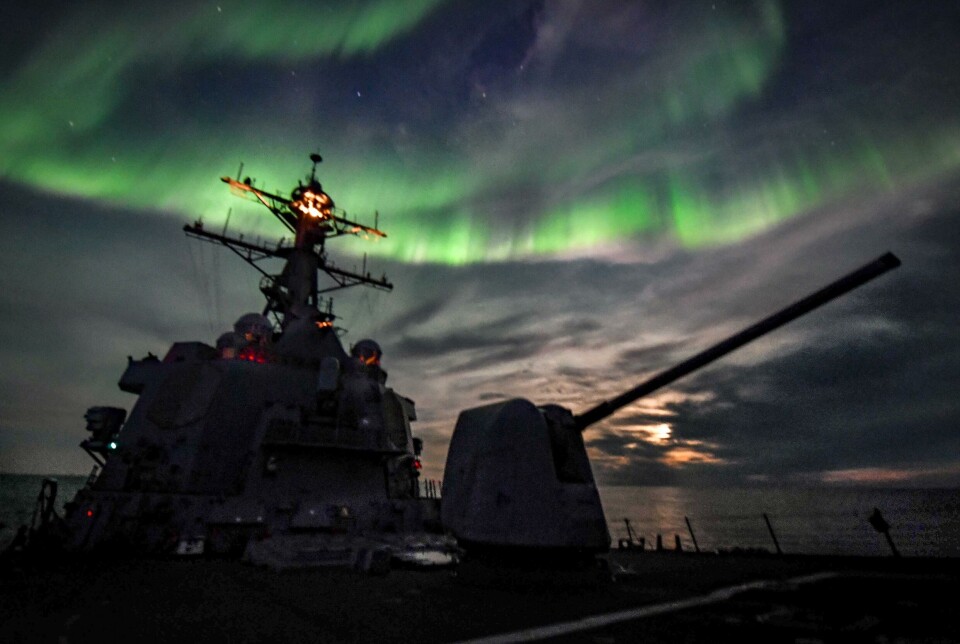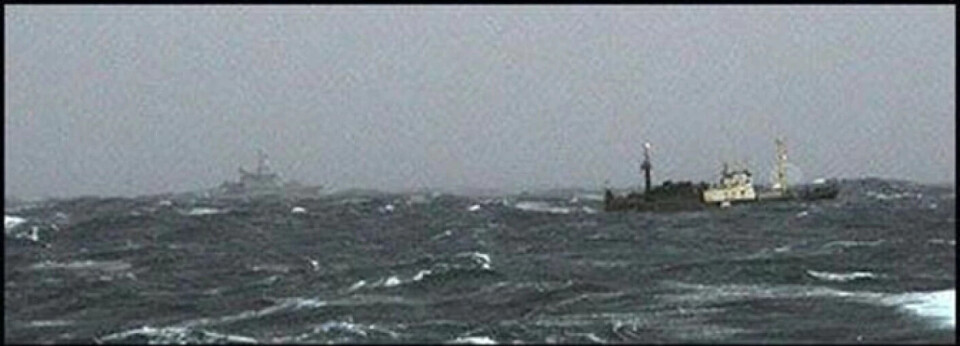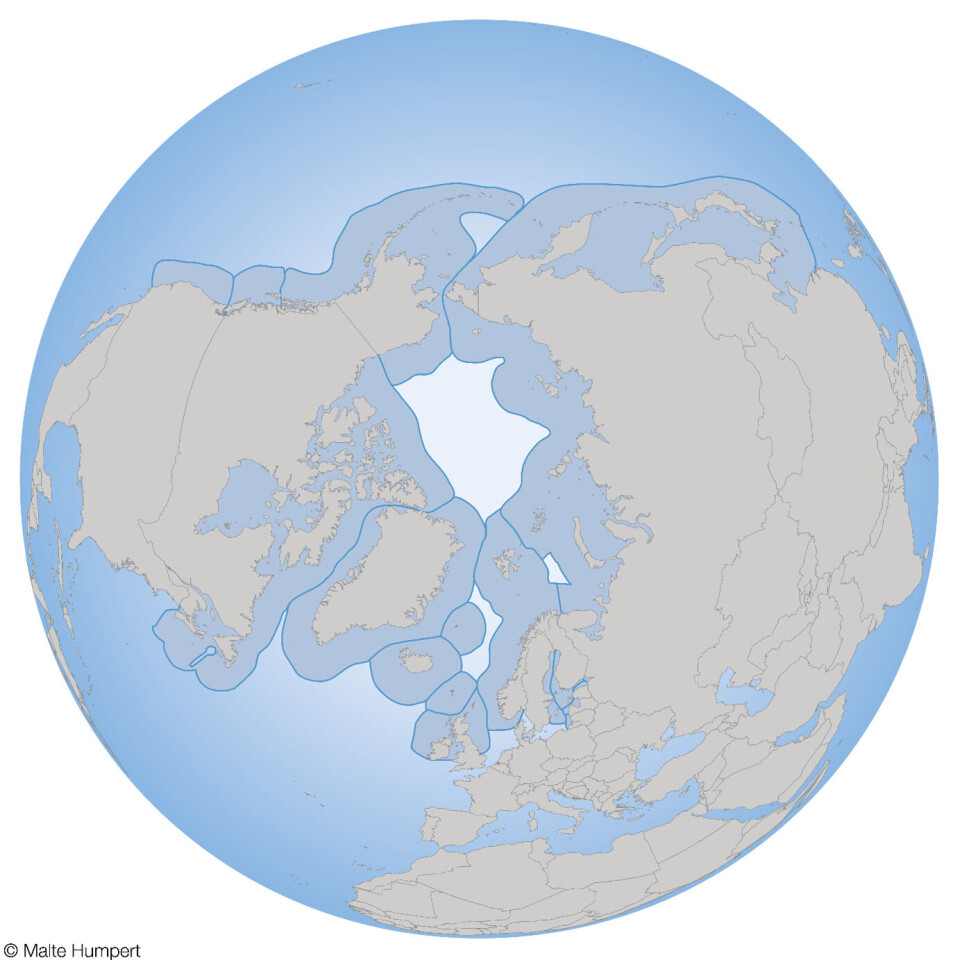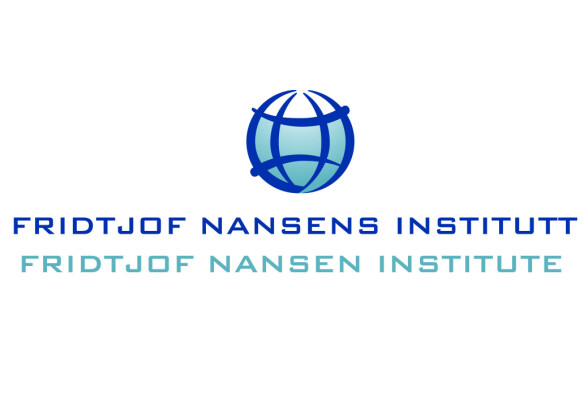THIS CONTENT IS BROUGHT TO YOU BY Fridtjof Nansen Institute - READ MORE

War in the Arctic? Researchers debunk three myths about the High North
Can melting ice in the Arctic trigger conflict and a race for resources? Researchers believe that there are three major misconceptions regarding northern geopolitics.
What could lead to a serious conflict in the Arctic? A story from nearly 20 years ago might provide some clues.
It was a cold autumn and the sea was rough. Norwegian Coast Guard inspectors were on duty and were far out to sea, about to board the Russian trawler Electron, as they had noticed the vessel was not abiding by protocols.
What followed next put Norwegian diplomacy to the test. The Russian fishermen took the Norwegian inspectors into Russian waters, and were pursued by Norwegian Coast Guard ships and helicopters. It later emerged that the Norwegian Naval Special Operations Command had also been mobilised.
Could have ended differently today
After delicate diplomatic efforts, Norway managed to get the Russian authorities to instruct the trawler to release the Norwegians and hand over Electron’s vessel documents.
The Coast Guard is part of the Norwegian defence. To avoid escalating the conflict, it was crucial that the Russian Northern Fleet was kept out of the area.

“The Electron incident occurred in 2005. If this had happened in 2024, it's not certain it would have ended as well,” Andreas Østhagen says.
He is a senior researcher at the Fridtjof Nansen Institute (FNI). He studies Arctic geopolitics, seeking to identify factors that could lead to dangerous security flare ups in the Arctic.
Everything that could have gone wrong
“When thinking about potential conflict in the North, it's precisely a scenario like the Electron case that could spiral out of control,” Østhagen says.
What would have happened if the fishery inspectors were armed? What if the weather had been good enough for the marines to board the ship? What if the admirals of the Russian Northern Fleet were not interested in de-escalation?
Many things could have gone wrong, contributing to an escalation of the conflict rather than keeping the tumult at as low a level as possible.
Østhagen envisions two scenarios for conflict in the North: A low-scale incident that escalates or a full-blown crisis, which, in that case, would be linked to something much larger than the Arctic where Russia plays a key role. He references the situation in Ukraine and the currenty global instability.
“There is no doubt that interest in the Arctic is increasing, both commercially and in terms of a geopolitical power play,” he says.
Geopolitics deals with how a country's politics, history, and society are shaped based on its geography.
The situation is calmer than expected
But Østhagen believes there are three major misconceptions about geopolitics in the Arctic:
The first is the possibility of war in the Arctic. The second is that there are unresolved borders in the Arctic and that a resource race is underway. The third is that climate change is the primary catalyst for all changes in the Arctic region.
“The reality is much calmer,” Østhagen says.
“The Electron case illustrates well everything that can go wrong. But it also shows why things usually dont go wrong. There's a willingness to cooperate," Svein Vigeland Rottem says.
He is a senior researcher at FNI and studies cooperation in the Arctic.
Rottem and Østhagen do not agree that the Arctic is a powder keg and a dangerous place, as recently stated by Lars Saunes, former head of the Norwegian Navy, to Norwegian Broadcasting Corporation NRK.

Myth 1: The possibility of war in the Arctic
Østhagen, addressing the misconception of imminent war in the Arctic, explains that the conditions in the Arctic are often more stable and transparent than many assume.
Conflict is not easily triggered, considering the vast areas and diverse countries involved. Østhagen emphasises the enormity of the Arctic, which encompasses eight countries, four million people, and extensive ocean areas. The countries include Russia, the Nordic states, the USA, and Canada.

He notes that the significant Russian presence – with almost half of the Arctic landmass under Russian control – influences perceptions of geopolitics in the North.
Iver B. Neumann, a Russia researcher and director at the FNI, concurs that the Arctic is less likely to witness armed conflict than other global locations.
He believes the primary driver for military conflict in the Arctic is Russia's use of Murmansk as a base for nuclear weapons.
“There are three main ways to keep such weapons mobile: in aircraft, on land by rail, and at sea on submarines. Where such submarines exist, as in Murmansk, there is also significant military attention. And where there is military attention, there is also the potential for conflict,” he says.
Neumann advises caution in responding to Russia's desire for global attention and military control, stressing the importance of Norway maintaining a cool head, enforcing sovereignty, and not succumbing to intimidation.
Myth 2: Unresolved borders and a race for resources
As the Arctic becomes more accessible due to melting sea ice because of climate change, a common myth suggests a scramble for resources and land in the North will occur.

But Østhagen clarifies that, unlike in other parts of the world, there are almost no disputes over Arctic borders.
“All the borders are settled,” he says, noting that the last conflict between Canada and Greenland was resolved in 2022.
Maritime boundaries are key for resource management and potential conflict. Law of the sea grants coastal states sovereign rights for resource exploitation in their economic zones.
In the Arctic, only one maritime boundary remains unresolve. It is between the USA and Canada – two close allies.
Østhagen, who wrote his PhD on maritime disputes, foresees no major concerns regarding sovereignty or territorial issues. He believes the myth persists due to historical reasons but emphasises that, with all the land borders settled and just one disputed sea border, Arctic resources are already distributed among the eight Arctic states.

Myth 3: Climate change drives all shifts in the Arctic
A third myth suggests that climate change is the main driver for all political shifts in the Arctic.
But Østhagen cautions against oversimplifying the issue, noting that while climate change does affect fish migration – leading to potential future conflicts around resource-rich areas like Svalbard – it's important to be specific about which aspects of climate change increase conflict risks.
Another claim Østhagen addresses is the notion that Russia’s military buildup in the Arctic is climate change-driven. He suggests that this is only partially true, as Russia is generally strengthening its military.
The Arctic, traditionally seen as secure due to inaccessibility and ice cover, hosts many of Russia’s nuclear weapons.
“Putin’s aim to rebuild Russia as a military superpower, with credible nuclear deterrence, involves deploying weapons to strategic locations like the Kola Peninsula,” Østhagen says.
With climate changes, increased shipping activity in Russian Arctic waters becomes more feasible.
“Therefore, it is perhaps not surprising that Russia wants to maintain control over its northern territories,” the researcher says.
However, according to Østhagen, Russia’s military buildup in the region is more about relations with NATO than the changing climate.
———
Read the Norwegian version of this article on forskning.no
References:
Østhagen, A. (ed.) ‘Geopolitics and Increased Tension? The Art of Differentiating Between Political Dynamics in the Arctic’ by Østhagen, A & Rottem, S.V. in Norway's Arctic Policy: Geopolitics, Security, and Identity in the High North, Edward Elgar Publishing, 2023, pp. 23-37.
Østhagen, A. & Lackenbauer, W.P. (ed.) ‘Security Dynamics In, Through, and Over the Arctic “Region”’ by Østhagen, A. & Lackenbauer, P.W. in 'Towards a Sustainable Arctic: International Security, Climate Change, and Green Shipping', World Scientific, 2023, pp. 1-24.

This content is paid for and presented by Fridtjof Nansen Institute
This content is created by Fridtjof Nansen Institute's communication staff, who use this platform to communicate science and share results from research with the public. The Fridtjof Nansen Institute is one of more than 80 owners of ScienceNorway.no. Read more.
More content from Fridtjof Nansen Institute:
-
“It's been a long time since we've seen so many positive developments in such a short period. We may indeed be entering a turning point for nature”
-
Russia could lose its big chance in the global gas market
-
Russia pushes for a fossil economy. Can China stop them?
-
What does China aim to gain in the Arctic?
-
Where do the metals in your electric car come from?
-
Power struggle in the Arctic Council: Greenland demands a leading role





































